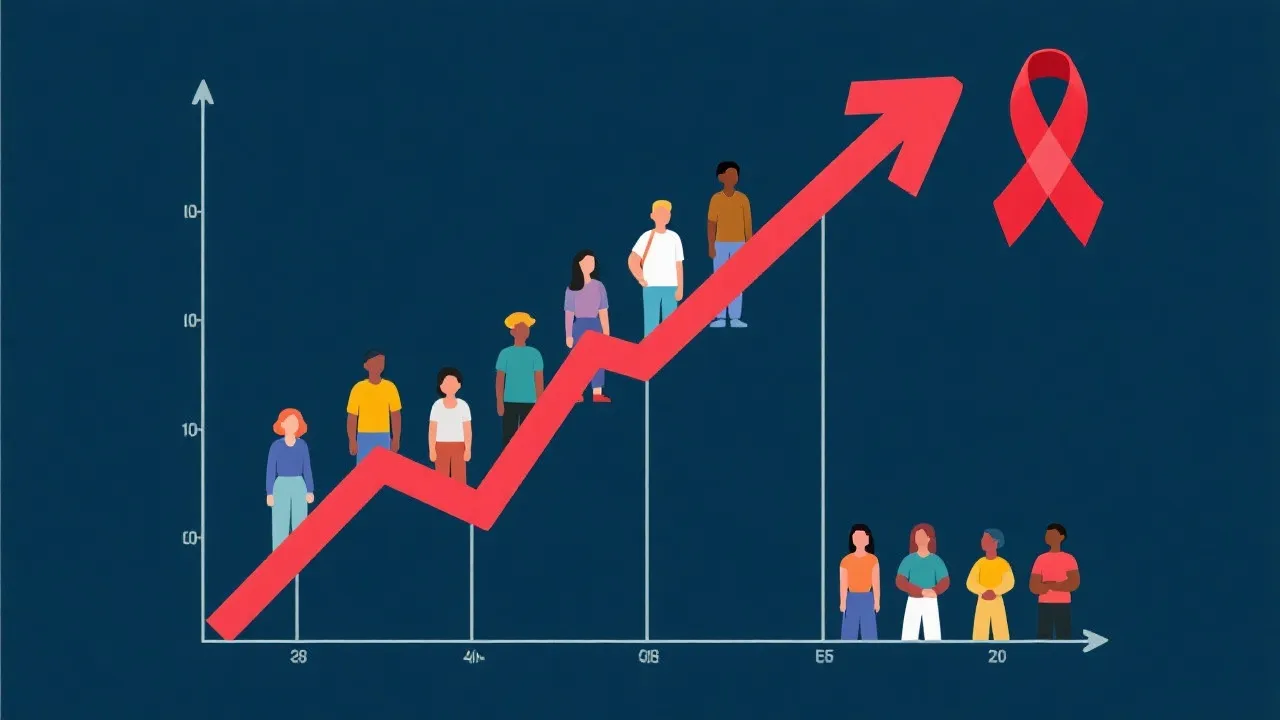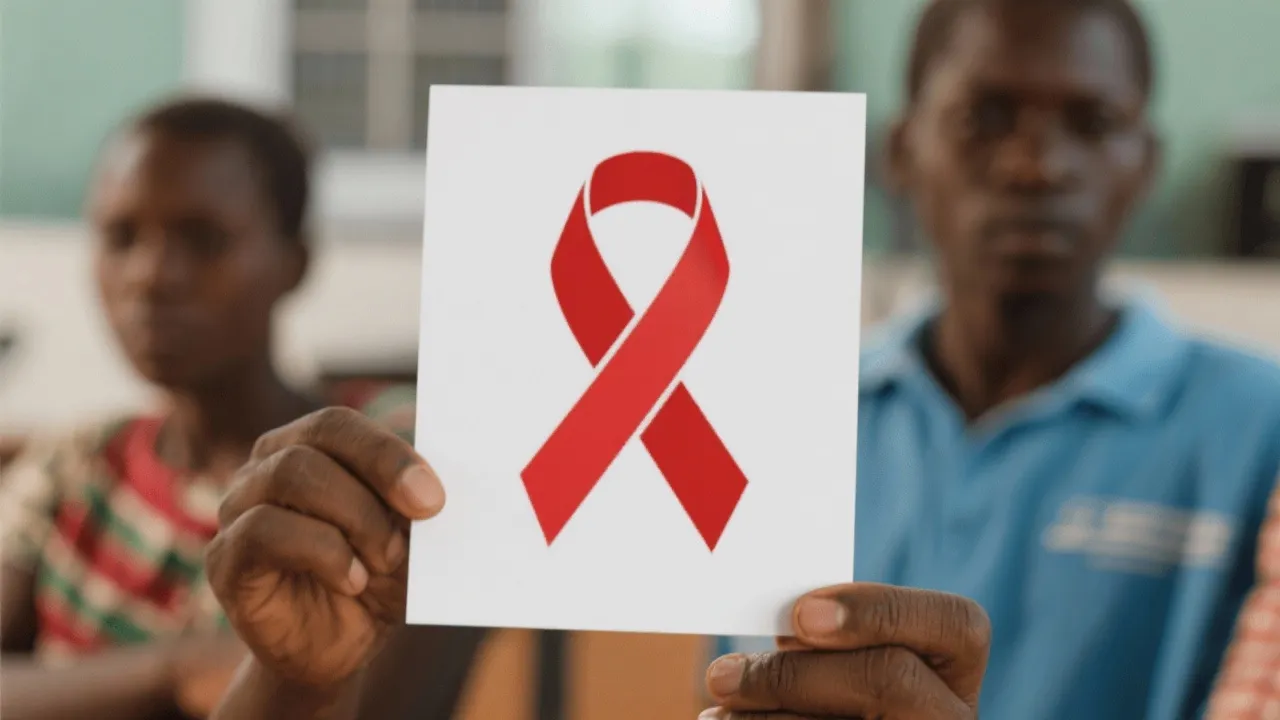Understanding HIV's Decline Worldwide
HIV infection rates have been declining globally, marking significant progress in public health efforts. This article explores the factors contributing to this decline, including advancements in medical treatments, widespread educational campaigns, and improved access to healthcare. Understanding these elements is crucial for maintaining and accelerating progress against HIV.

Introduction: The Global Decline of HIV
In recent years, there has been a notable decrease in the prevalence of HIV infections worldwide. This trend, characterized by a reduction in new cases and improved management of existing ones, indicates the success of global health initiatives aimed at curbing the spread of HIV. Although challenges remain, the declining numbers are a testament to ongoing international efforts. Countries have mobilized resources, set ambitious targets, and engaged communities to tackle the stigma attached to HIV, leading to heightened awareness and effective interventions. This introduction sets the stage for a deeper exploration of the factors contributing to the decline, the community-driven initiatives that are making a difference, the persistent challenges faced, and strategies for sustaining progress.
Factors Contributing to HIV Decline
The decline in HIV infections can be attributed to several critical factors. One of the main drivers is the improvement in antiretroviral therapy (ART) availability. With more individuals gaining access to ART, the virus's ability to replicate has been significantly reduced, lowering the transmission rate. The importance of universal access to ART cannot be understated, as it directly correlates with the achievement of the UNAIDS 90-90-90 targets — ensuring that 90% of people living with HIV know their status, 90% of those diagnosed receive sustained ART, and 90% of those on ART achieve viral suppression.
- Advancements in Medical Treatments: Over the past few decades, medical advancements have vastly improved HIV treatment options. Highly active antiretroviral therapy (HAART) and its successors have increased life expectancy for people living with HIV, transforming it from a terminal condition to a manageable chronic illness. Innovations such as long-acting injectable ART formulations and new drug classes also provide patients with more options, making adherence easier and improving overall outcomes.
- Increased Access to Healthcare: Global efforts have enhanced access to healthcare services, particularly in low-income regions heavily affected by HIV. Initiatives like The Global Fund and PEPFAR have been instrumental in providing resources and support to healthcare systems in these areas. By promoting health equality and integration of HIV services into general health systems, barriers to access are being gradually dismantled, enabling timely diagnosis and treatment.
- Education and Awareness Campaigns: Education plays a crucial role in preventing new infections. Public health campaigns have prioritized HIV education, addressing prevention methods such as safe sex practices, the use of prophylaxis, and regular testing. Interactive workshops, online resources, and targeted outreach in at-risk communities help to ensure that information reaches those who need it most. These educational efforts empower individuals to reclaim control over their health, contributing to a decline in stigma and increased testing and treatment uptake.
The Role of Community and Global Initiatives
Global and community-led initiatives have played an essential part in reducing HIV infection rates. Non-governmental organizations (NGOs) and community groups have facilitated outreach programs, encouraging broader acceptance and integration of preventive measures. Moreover, international collaborations have been effective in amassing resources and expertise necessary for tackling HIV. Community health workers are integral to these initiatives, often providing services that extend beyond health care by fostering relationships within communities that help combat stigma and discrimination against people living with HIV.
One exemplary program is the “Test and Treat” strategy, which not only emphasizes the need for testing but also ensures those who are diagnosed are immediately linked to treatment. This approach has been widely adopted in various countries, significantly accelerating the time to treatment initiation and reducing transmission rates. Additionally, community-based health models, such as peer support groups, foster environments where individuals can discuss their experiences and support one another along the treatment journey.
Challenges Still Facing the Fight Against HIV
Despite the decline in infection rates, obstacles persist. Stigma and discrimination against those living with HIV continue to be significant barriers. Fear of judgment often hinders individuals from testing and seeking treatment, revealing the importance of continued efforts to educate communities about HIV. Furthermore, socio-economic difficulties, particularly in developing regions, still limit access to treatment and preventive care. Many individuals are unable to afford transportation to healthcare facilities or the cost of medications, and this disparity can result in missed opportunities for early intervention.
Additionally, certain populations remain disproportionately affected by HIV. These include men who have sex with men, sex workers, people who inject drugs, and transgender individuals. Tailored responses are necessary to address the unique challenges faced by these communities, including targeted outreach programs and culturally sensitive healthcare services. Without this focused approach, the progress that has been made could stall or even reverse, leading to increased rates of infection and a resurgence of the epidemic.
Comparative Analysis of Global Efforts
| Region | Approach | Results |
|---|---|---|
| Sub-Saharan Africa | Focused on community health interventions and ART distribution. | Significant reduction in new cases and improved life expectancy. Leading in global ART coverage. |
| Western Europe | Universal healthcare support and widespread HIV education. | Stabilized infection rates and high ART coverage, with effective strategies addressing key populations. |
| North America | Integration of HIV care into primary healthcare settings and robust prevention programs. | Decline in new infections among some demographics, though disparities still exist. |
| Asia and the Pacific | Focused on harm reduction strategies and partnerships with local organizations. | Presence of emerging initiatives causing longer-term improvements in care accessibility. |
| Latin America | Community-based interventions promoting testing and linkage to care. | Increased awareness and testing rates, but challenges with treatment adherence remain. |
Looking Forward: Sustaining the Progress
Continued efforts are essential to maintain and accelerate the downward trend in HIV infections. This includes sustaining funding for global health initiatives, intensifying educational campaigns, and addressing healthcare disparities. Future strategies should also focus on integrating new medical advancements and innovative solutions for even broader impact. Innovations like pre-exposure prophylaxis (PrEP) and HIV self-testing are empowering individuals with more control over their health decisions, potentially leading to further reductions in infection rates.
Moreover, holistic health approaches that take into account mental health, nutrition, and social support systems are crucial for supporting individuals living with HIV. Innovations in telehealth and digital health technologies can also bridge gaps in access to care, particularly in remote and resource-limited areas. Policymakers, healthcare providers, and community organizations must collaborate to implement these strategies effectively, ensuring that the progress achieved thus far is not only sustained but enhanced.
Furthermore, as the global landscape continues to evolve due to factors such as climate change, migration, and global health crises like pandemics, the responses to HIV must adapt to these realities. The integration of HIV responses with general health policies can lead to a more sustainable approach, a vital strategy for addressing the complexities of public health in the 21st century. Ongoing research, surveillance, and adaptability will ensure that interventions remain effective, reflecting the needs of populations served.
FAQs
- Why are HIV rates declining? HIV rates are declining due to enhanced medical treatments, better preventative measures, and increased public health awareness. These elements have contributed to improved health outcomes for those living with HIV and a decrease in new infections.
- Is there a cure for HIV? As of now, there is no cure for HIV, but effective treatments allow individuals to manage their conditions well and maintain a good quality of life. Ongoing research into vaccines and potential cures remains critical in the fight against HIV.
- How can stigma against HIV be reduced? Increased education, normalized discussions about HIV, and community support programs can play significant roles in reducing stigma. Engaging public figures and employing media campaigns fosters a broader understanding of HIV, challenging misconceptions and promoting acceptance.
Efforts to combat HIV have yielded promising results globally. By comprehensively understanding the components contributing to this decline, stakeholders can continue to work together to mitigate the impact of HIV, aiming for a future where infection rates are further minimized. Ongoing collaboration among governments, international organizations, public health agencies, and local communities remains essential to achieve the ultimate goal of eliminating new HIV infections and ensuring that all individuals have access to the resources and support they need for healthy lives.





